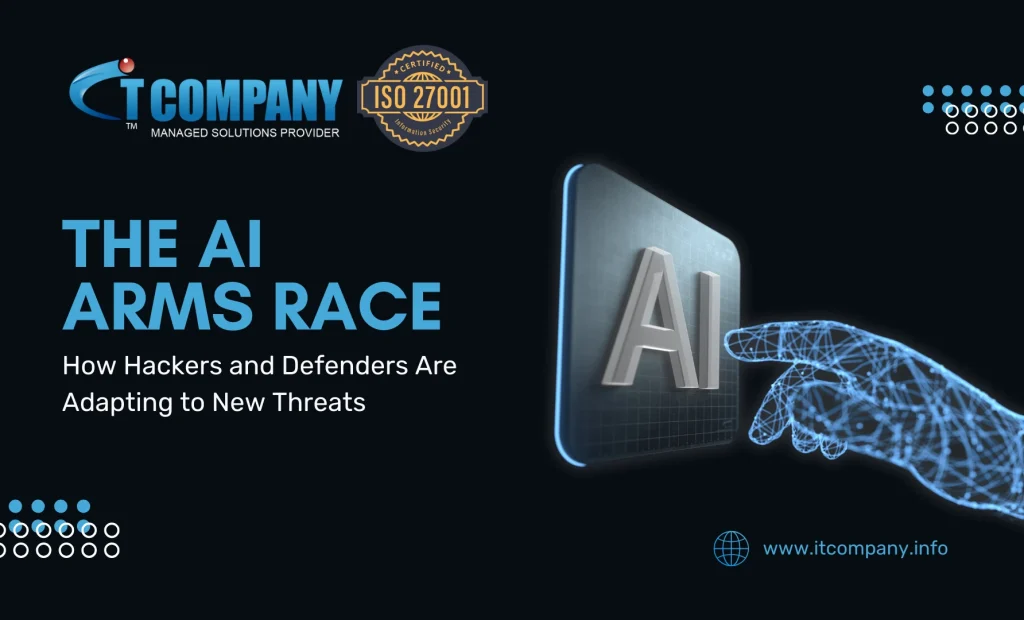
Picture this: you get an email from what seems like your bank, complete with their logo, signature colors, and official-looking links. It asks you to reset your password, but what you don’t realize is that this is a carefully crafted trap, baited with everything that would make you bite. It is really possible and can happen using AI model. Yes, you got it right.
Artificial intelligence has broadened ways for cybercriminals to break the protocols and exploit personal data for personal benefits.
Table of Contents
ToggleHow Cybercriminals Are Adapting to Machine Intelligence
As digital threats grow more sophisticated, cybercriminals are increasingly turning to cutting-edge technologies to carry out their attacks. Here’s how they are staying one step ahead of traditional defenses:
- Automated Attacks:
Cybercriminals are harnessing the power of machine learning to streamline and enhance cyberattacks. By automating processes like creating phishing emails or forging fake websites, these attacks become faster, more convincing, and harder to detect. For example, machine-driven tools can craft personalized messages or even deepfake videos—manipulating both images and voices—to trick individuals into sharing personal information. - Evasion Tactics:
One of the most effective ways attackers are using technology is through adaptive malware. Unlike traditional viruses that rely on signature-based detection methods, these modern threats can change their behavior in real-time to avoid detection. This adaptability makes them much harder to catch. Hackers can also use data analytics to study security systems and find vulnerabilities, allowing them to bypass defenses more easily. - Reconnaissance and Targeting:
Cybercriminals use machine-driven tools to gather and analyze enormous amounts of data—like scouring social media profiles or scanning for system vulnerabilities. This allows them to zero in on high-value targets and craft attacks that are more precise and impactful. The more data they collect, the smarter and more efficient their attacks become. - Adversarial Machine Learning:
This refers to a form of “tricking the system.” Hackers feed AI models specially crafted inputs, designed to confuse them into making wrong decisions. For example, by subtly altering an image or a piece of text, attackers can trick facial recognition systems or spam filters into failing. It’s like exploiting the blind spots of an AI system to slip through unnoticed. - Poisoning AI:
Cybercriminals aren’t just targeting traditional systems; they’re also attacking the very systems that are designed to defend against them. By corrupting the data used to train machine learning models, they can poison AI’s decision-making process, rendering it ineffective or unreliable.
How Cyber Defenders Are Fighting Back
While cybercriminals are becoming more sophisticated, defenders are also turning to advanced technologies to strengthen their security measures. Here’s how they’re using machine intelligence to protect systems:
- Smart Threat Detection:
One of the most significant advantages of AI is its ability to analyze massive data sets at lightning speed. By scanning network traffic or user behavior, security teams can spot suspicious activity or signs of a breach. With machines working faster than humans ever could, threat detection is becoming more efficient and more accurate. - Behavioral Analytics:
By monitoring the behavior of users and systems, intelligent security systems can identify when something out of the ordinary happens. For instance, if an employee suddenly accesses files they’ve never touched before, the system can flag it as a potential breach. This is especially useful for detecting insider threats or unauthorized access attempts. - Automated Response:
When a security breach occurs, time is of the essence. AI can assist by automatically taking actions to neutralize threats in real-time. This includes isolating compromised systems, blocking malicious IP addresses, or even applying patches to fix vulnerabilities. Such automation helps reduce response times and limits the damage caused by cyberattacks. - Augmenting Human Expertise:
While AI is powerful, human expertise remains vital in cybersecurity. AI can help security analysts by filtering through large volumes of alerts and presenting only the most critical ones, allowing them to focus on complex issues. Additionally, AI can simulate attacks to test defenses before a real-world breach occurs, helping organizations stay prepared. - Defending Against Adversarial Attacks:
Just as attackers use machine learning to deceive security systems, defenders are developing countermeasures. These systems are specifically trained to recognize and resist manipulated inputs, such as altered images or text. Researchers are working hard to make AI defenses more robust and better equipped to withstand adversarial attacks. - Predictive Threat Intelligence:
By analyzing global threat data, AI can help security teams predict potential attacks and prepare accordingly. This could involve identifying emerging attack methods or pinpointing which vulnerabilities are most likely to be targeted. Proactive defense is crucial for staying one step ahead of cybercriminals.
Challenges in the Cybersecurity Arms Race
The race to harness the power of machine intelligence comes with its own set of challenges for both sides:
- Ethical and Legal Issues:
As AI becomes more integrated into cybersecurity, ethical concerns arise. How do we ensure these technologies are used responsibly, and how do we prevent them from being exploited for malicious purposes? Governments and organizations will need to establish regulations to strike a balance between innovation and safety. - Resource Disparities:
Large organizations and governments often have access to the most advanced AI tools, creating a gap between well-funded defenders and smaller companies. The resource disparity means that not every organization can afford the latest AI-driven cybersecurity measures, leaving them vulnerable to attacks. - Evolving Threats:
As hackers develop more sophisticated techniques, defenders must stay on their toes. The constant cycle of innovation and counter-innovation creates a dynamic environment where both sides must continually adapt to new challenges. - Overreliance on Machines:
While AI has incredible potential, it’s not foolproof. If defenders become too reliant on automated systems, they may overlook threats that a human would spot. Moreover, cybercriminals could exploit weaknesses in AI itself, making it ineffective.
The Future of the Cybersecurity Arms Race
Looking ahead, the future of cybersecurity is filled with both exciting opportunities and significant challenges:
- AI vs. AI Battles:
As both sides continue to refine their AI capabilities, we may see direct confrontations between AI-driven attacks and defenses. In these high-stakes battles, intelligent systems will adapt to each other’s moves in real-time, creating an unpredictable and fast-moving security landscape. - Collaboration and Regulation:
As the stakes grow higher, governments, organizations, and cybersecurity experts will need to collaborate more closely. Sharing intelligence, establishing ethical standards, and setting regulations will become key to ensuring that AI is used responsibly and effectively. - Quantum Computing:
The emergence of quantum computing could change the entire game. These powerful machines could potentially break current encryption methods, rendering many of today’s defenses obsolete. This could shift the focus of cybersecurity to entirely new strategies for data protection. - Human-AI Collaboration:
The most effective cybersecurity solutions will likely be a combination of human expertise and machine intelligence. AI will handle repetitive tasks and analyze massive datasets, while humans apply creativity and critical thinking to solve complex problems. Together, they’ll form an unbreakable defense against cyber threats.

Conclusion
The AI arms race is reshaping the cybersecurity landscape, with both attackers and defenders harnessing the power of machine intelligence to stay ahead of each other. As technology continues to advance, new opportunities and challenges will arise, demanding constant innovation and adaptation.
While AI offers powerful tools to enhance security, it also introduces new risks that must be managed. By fostering collaboration, maintaining vigilance, and balancing automation with human expertise, we can hope to stay one step ahead in this dynamic battle for digital security.

